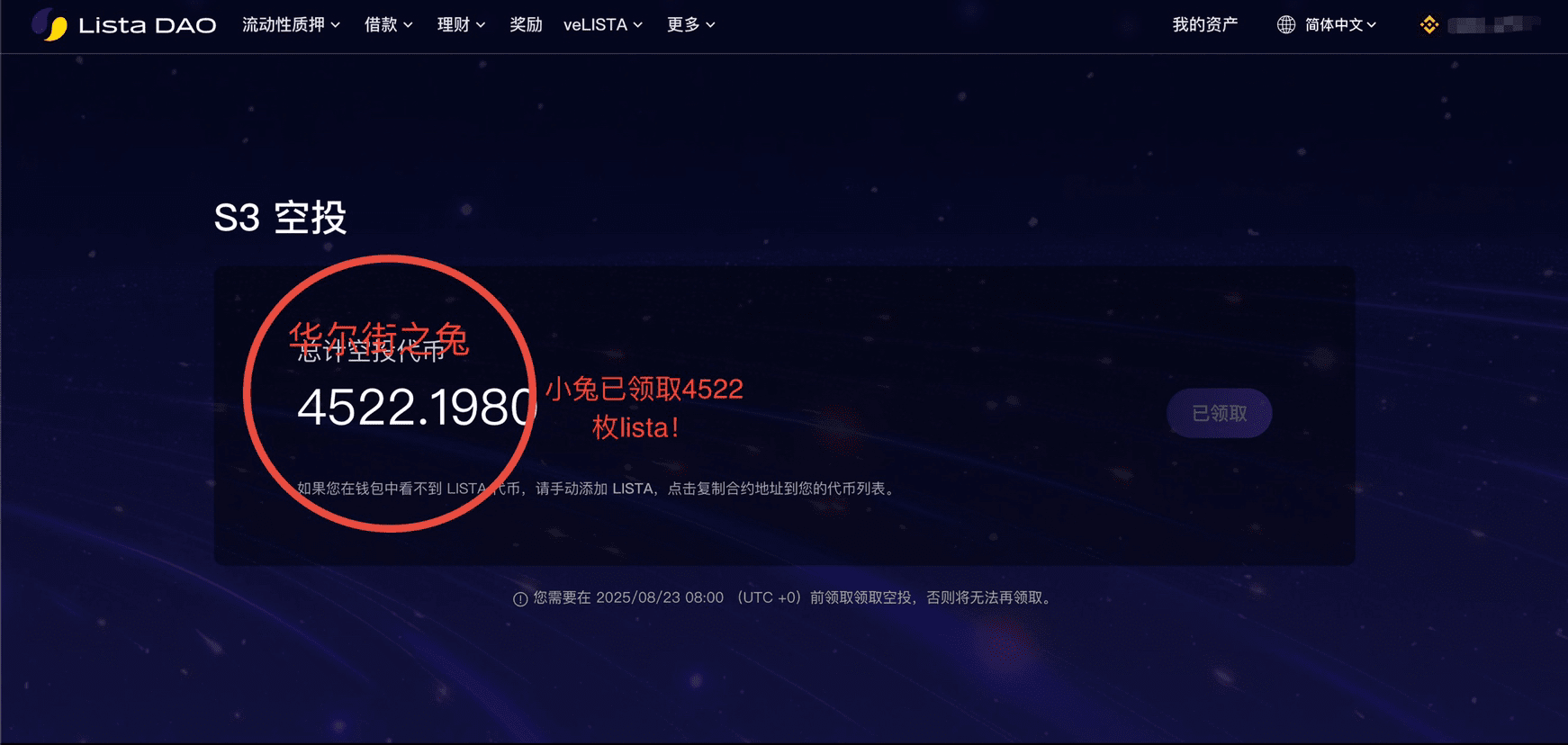Feeling great, almost missed the Lista airdrop on the last day! Brothers, quickly check your wallets, the official sent me 1500u! I thought it was just a small amount and didn’t pay attention. Now, logging into my wallet, I have a full 4588 LISTA! So awesome!
Lista S3 Third Quarter Airdrop Claim Guide
1. First, enter the official Lista website in your Binance Web3 wallet;
2. Find the center of the screen, or click the 'Link Wallet' button in the upper right corner, and select Binance wallet to complete the binding;
3. Click the 'Check Eligibility' button in the center of the screen, and once confirmed, you can directly start the claiming process.
The S3 third quarter airdrop benefits are genuinely full of sincerity, with a strong force, don't miss out!
Today, let's talk about Lista - this project just officially announced the destruction of 20% of LISTA tokens, totaling 200 million. This is definitely a heavyweight benefit for its long-term development!
From the perspective of DeFi economic models, this initiative not only allows the token to achieve nominal deflation but, more importantly, can truly deposit the value density accumulated during the network growth process into the hands of existing holders—through deep binding of protocol revenue, ecosystem incentives, and governance rights, avoiding the 'concept-only and no implementation' dilemma, and also building a verifiable foundation for value capture through data. This is clearly a long-term positive signal.
Currently, the USD1 ecosystem has achieved a milestone with the TVL exceeding 100 million USD. In this ecosystem, the core role of Lista DAO is 'core of liquidity distribution', and its operational logic is always focused on 'engineering implementation of efficiency and stability':
1. Standardize diverse collateral (such as quality LSTs and stablecoin holdings) to reduce friction costs when USD1 is issued and redeemed;
2. Relying on routing and market-making modules, efficiently direct USD1 into mainstream scenarios such as lending, perpetual margin, and clearing liquidity pools, enhancing the reuse rate of unit liquidity;
3. By leveraging cross-chain technology and multi-protocol collaboration, create a funding closed loop of 'minting-using', reducing the in-transit risk and extra costs during fund circulation, while setting risk control thresholds for upstream collateral and establishing predictable rates for downstream scenarios, achieving a balance of safety and efficiency.
Looking at the pathway to surpass a TVL of 3 billion USD, the core competitiveness of Lista DAO focuses on three points:
1. The risk framework and collateral pool structure possess 'anti-fragile' characteristics, with diversified collateral configuration, and the discount rate and liquidation threshold are traceable, further enhancing system security;
2. Transform cross-domain liquidity supply and scheduling capabilities into infrastructure, addressing the pain point of 'insufficient liquidity at critical nodes' in market-making and clearing scenarios within the industry;
3. Standardized interfaces, clear incentive mechanisms, and liquidation processes have reduced development and maintenance costs when various entities collaborate within the ecosystem.
Subsequent observations should focus on four core hard indicators:
• Time taken and failure rate for USD1 minting/redeeming (directly reflects system operational efficiency);
• The liquidity depth and turnover rate of USD1 within the main protocol (key measure of liquidity quality);
• Progress of LISTA destruction/repurchase and related cost ratio (validates the project's ability to capture value);
• Governance participation and proposal approval efficiency (reflects the health of the ecosystem).
Only when these indicators improve simultaneously does the 'stable income + scalable application' dual-drive model truly take effect.



